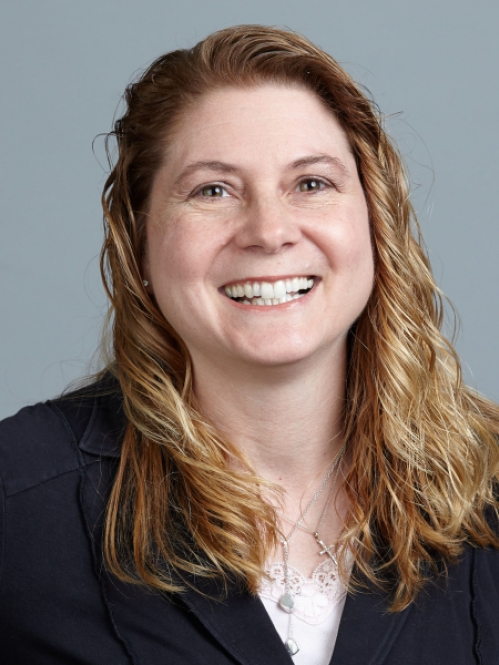Kristen Labazzo

Brief Bio
I am a biomedical engineer with an executive MBA and 15 years of lab experience in cutting-edge science including biomaterials, stem cell biology and tissue engineering/regeneration. My current role as an educator involves developing new industrial courses, a co-op program, and also leading projects which focus on the patient perspective. As biomedical engineers, our work is centered on helping people and I am creating opportunities for students to apply their knowledge to projects which help the disabled. I have been an invited speaker for schools ranging from Elementary to Ivy League universities and I am passionate about innovation, STEM initiatives and improving biomedical pedagogy via engagement and experiential learning. My goal is to continue to educate people on the importance of science, research and innovation, to continue developing patient-centric research opportunities, and further recruitment of young students, especially women, into STEM careers.
Research Interests
Patient-Centric Senior Design
I mentor students who are engaged in research aimed to develop assistive technologies to help the disabled. Our current collaborators are the Matheny Medical and Educational Center, http://www.matheny.org and Operation Rebound. https://www.challengedathletes.org/programs/operation-rebound/?gclid=EAI...
A Novel Approach Utilizing a Biomaterial Scaffold for the Prevention of Trauma-Induced Heterotopic Ossification
Collaborator; Dr. Joseph Freeman https://bme.rutgers.edu/joseph-w-freeman Heterotopic Ossification (HO) is the formation of bone in places where it is normally not found, such as in muscle and soft tissues, and is commonly seen in combat-related amputations and blast injuries. HO can have neurogenic and genetic causes, however traumatic HO is the most common and on the rise due to the prevalence of modern warfare. HO can cause several issues including pain and limited range of motion, however for amputees, the most significant effect is poor prosthesis fit. Current treatments include administering anti-inflammatory drugs or low-dose radiation, however these don’t always work, resulting in painful surgical excision of the bone. Therefore, an unmet need exists for a novel treatment strategy to mitigate HO. We propose a completely new approach; to take common tissue engineering practices intended to induce bone growth, and engineer the inverse of these techniques to create a scaffold that will appropriately heal, but then stifle, abnormal bone growth. We will select biomaterials based on degradation rates and acidic byproducts to prevent mineralization, and employ fabrication techniques such as 3-D printing, salt-leaching and electrospinning to create a unique scaffold with small pores to discourage bone growth. We will test the scaffold’s ability to inhibit bone cell growth in vitro, and will then test the chosen scaffold in an appropriate animal model of bone growth. These studies can lead to a completely new approach for a rapidly growing problem in our military, but can be extended to others who have suffered traumatic limb loss.
Honors
• Busch Biomedical Grant, August 2019
• A Novel Approach Utilizing a Biomaterial Scaffold for the Prevention of Trauma-Induced Heterotopic Ossification
• Student Professor of the Year 2018-19, Engineering Governing Council, 2019
• Avantor Foundation Grant to support patient-centric senior design, 2019
• Byrne Seminar Research Award for seminar entitled “Engineering Immersion: Utilizing the Patient Perspective and Environment in Biomedical Research”, 2018
• Selected by two students in the “Seeking Success Leadership Program” at Rutgers for Faculty Appreciation, 2018
Education
• Ph.D., Biomedical Engineering, Rutgers University, 2004
• MBA, Technology Management, NJIT, 2014
• B.S., Chemistry, Caldwell University, 1997